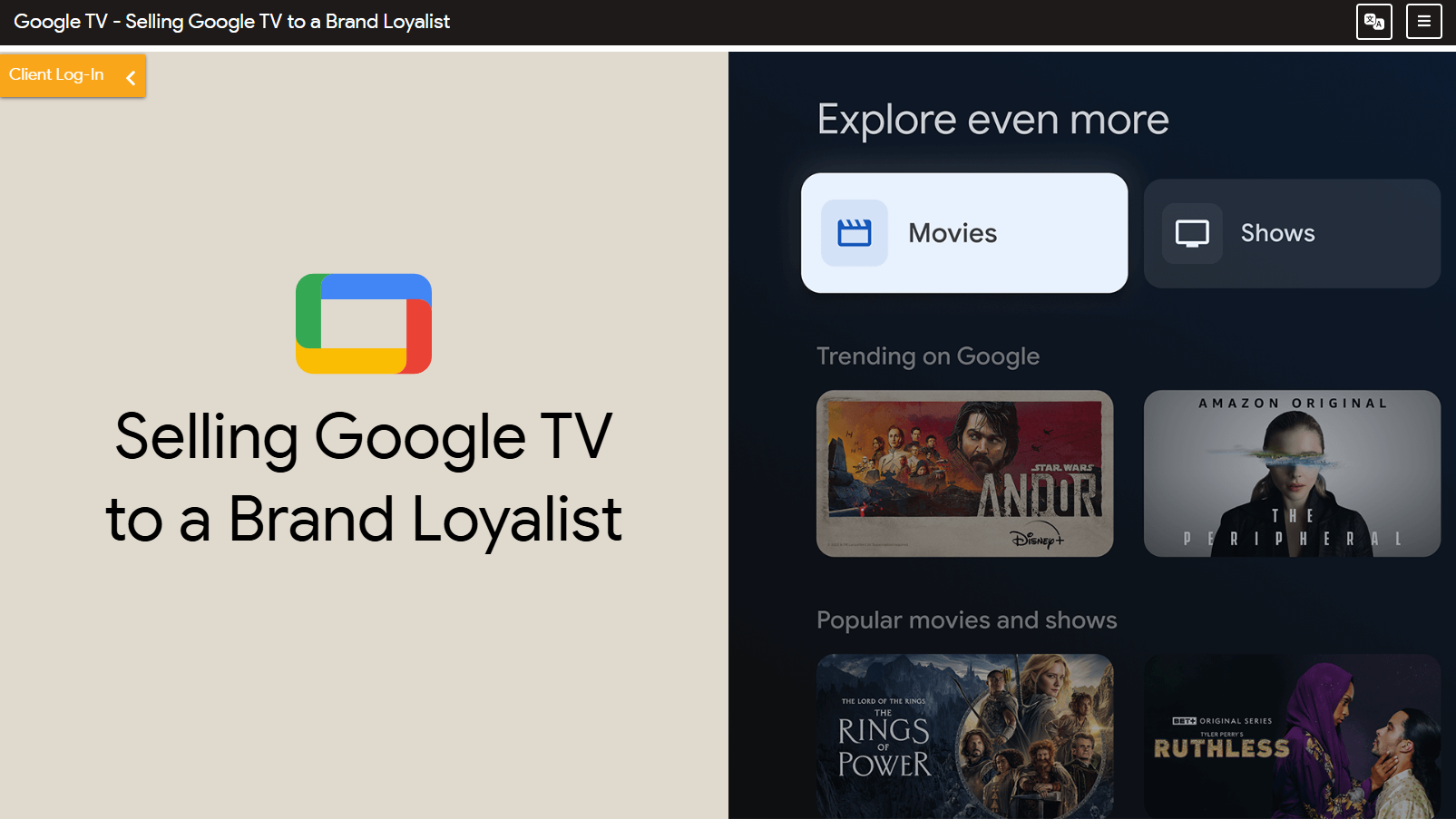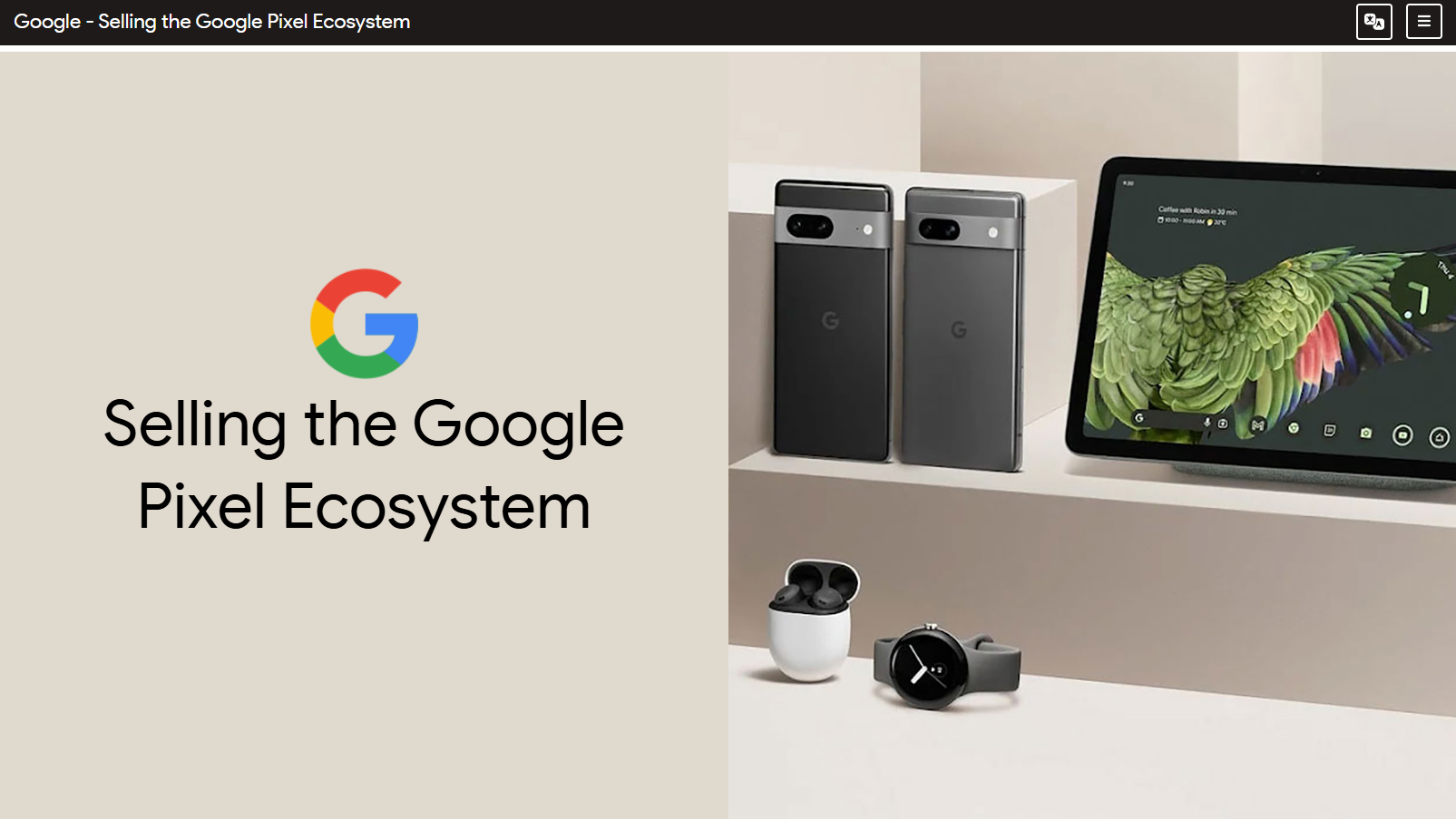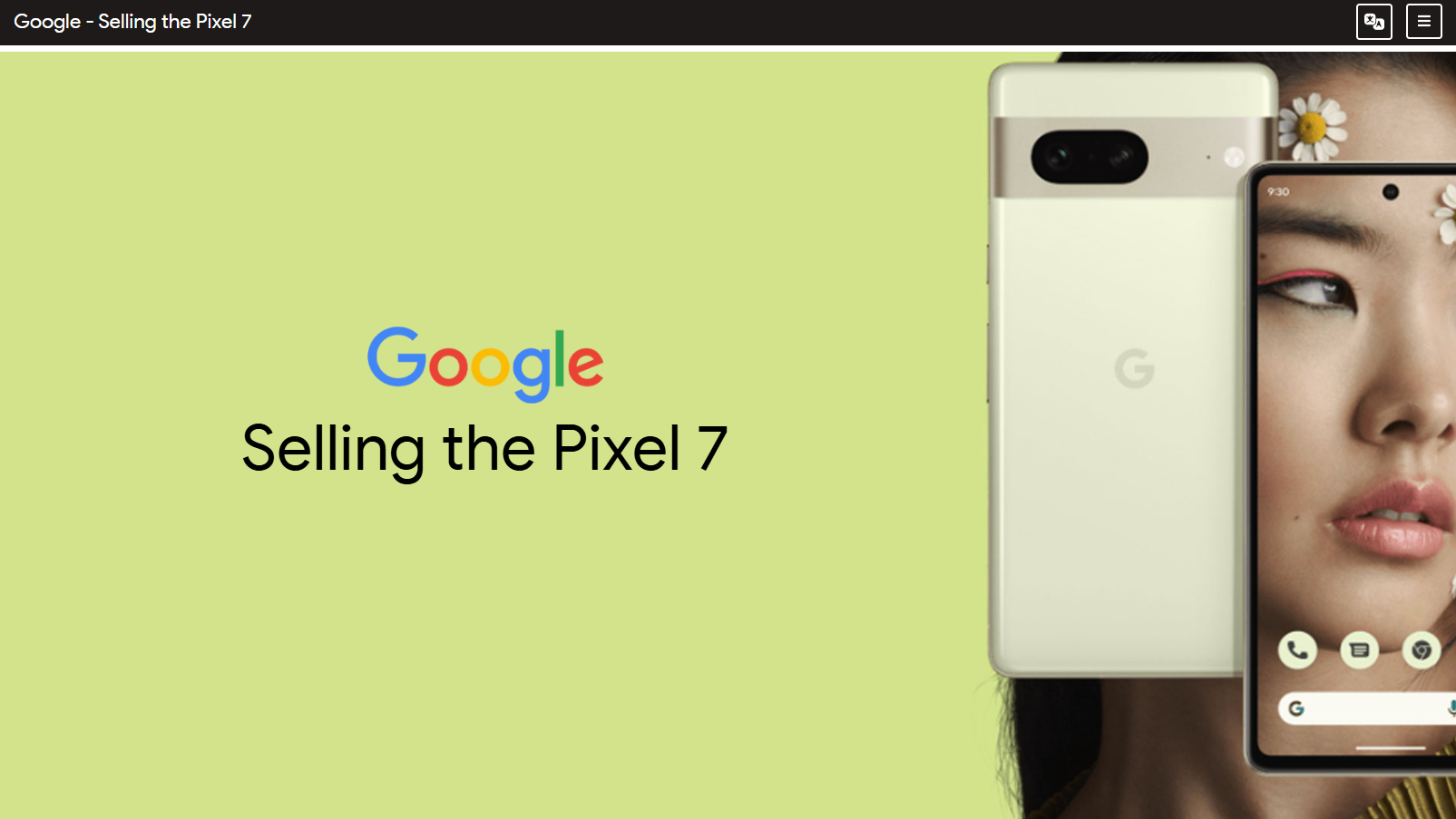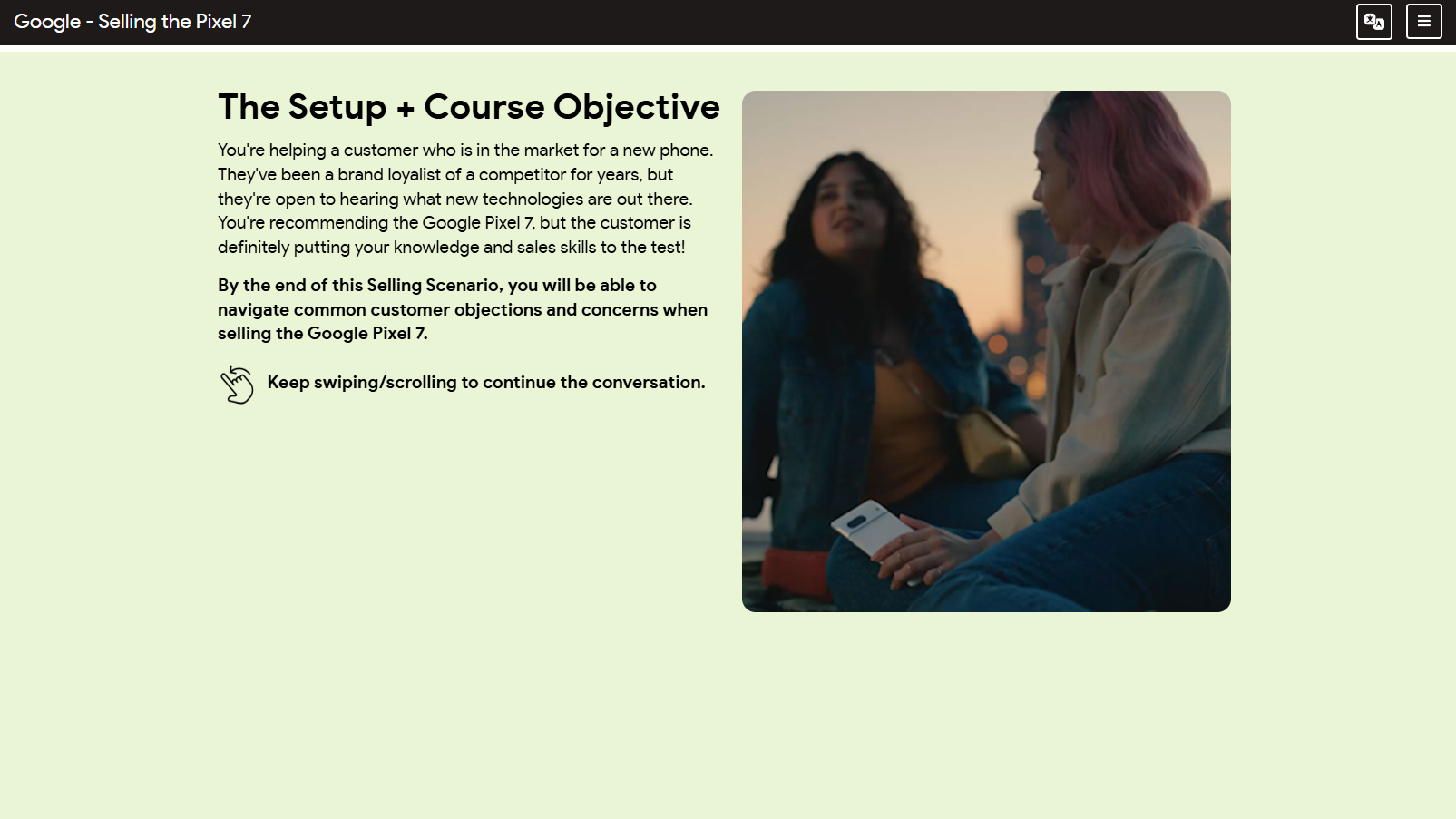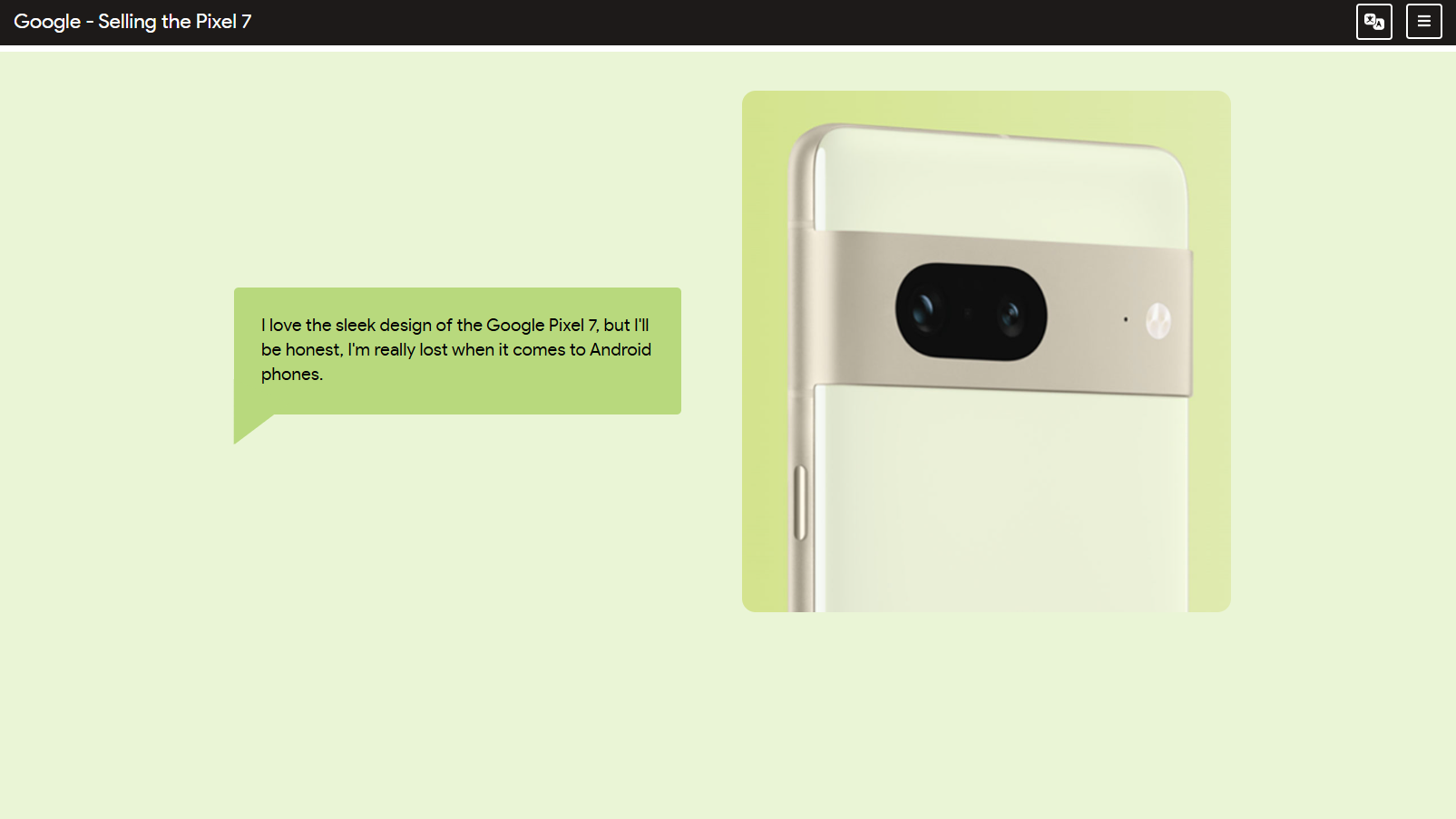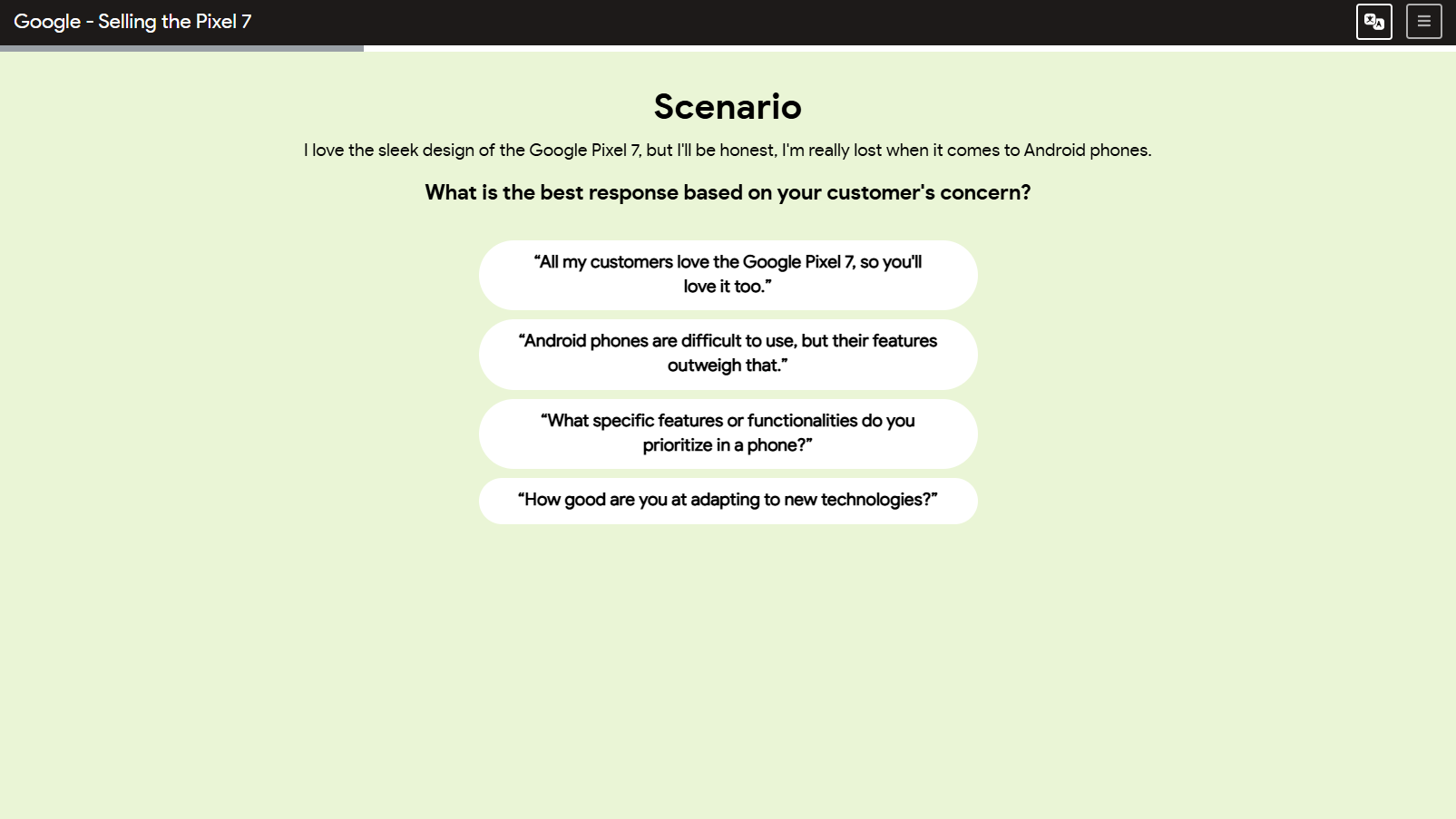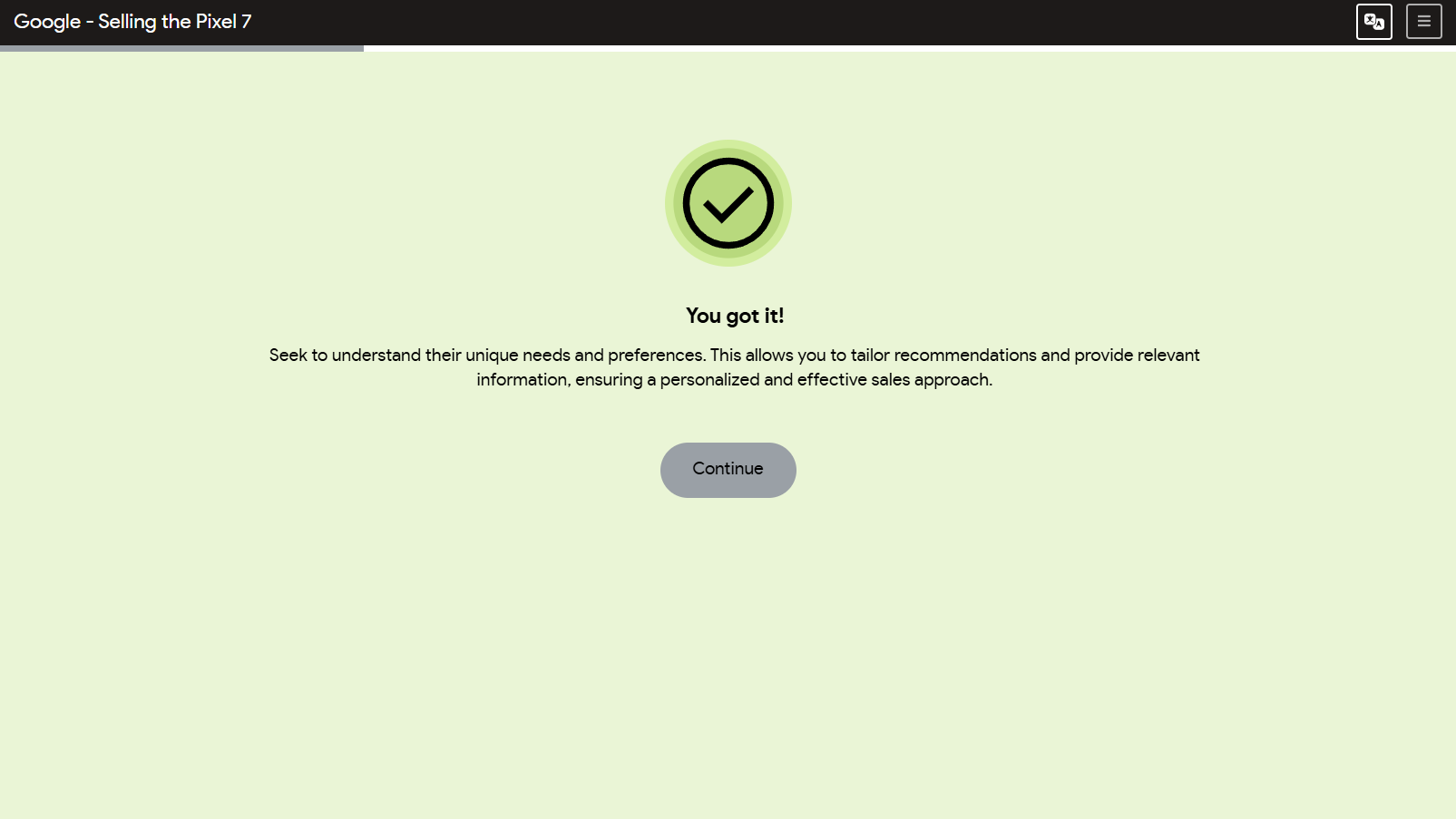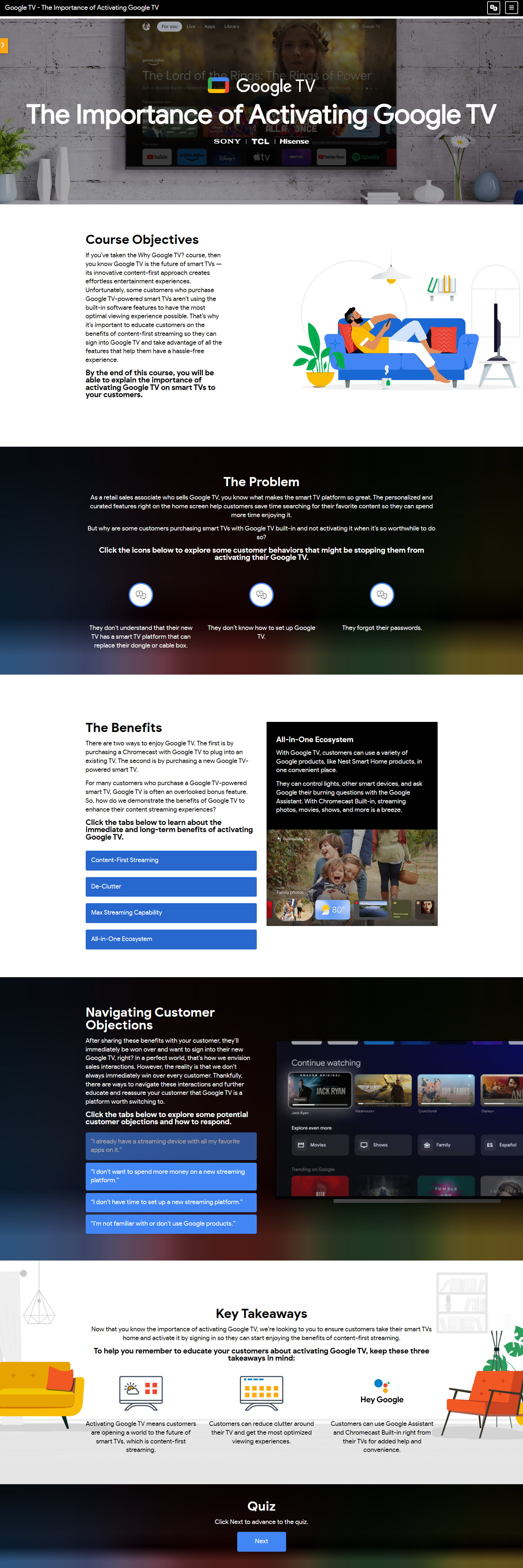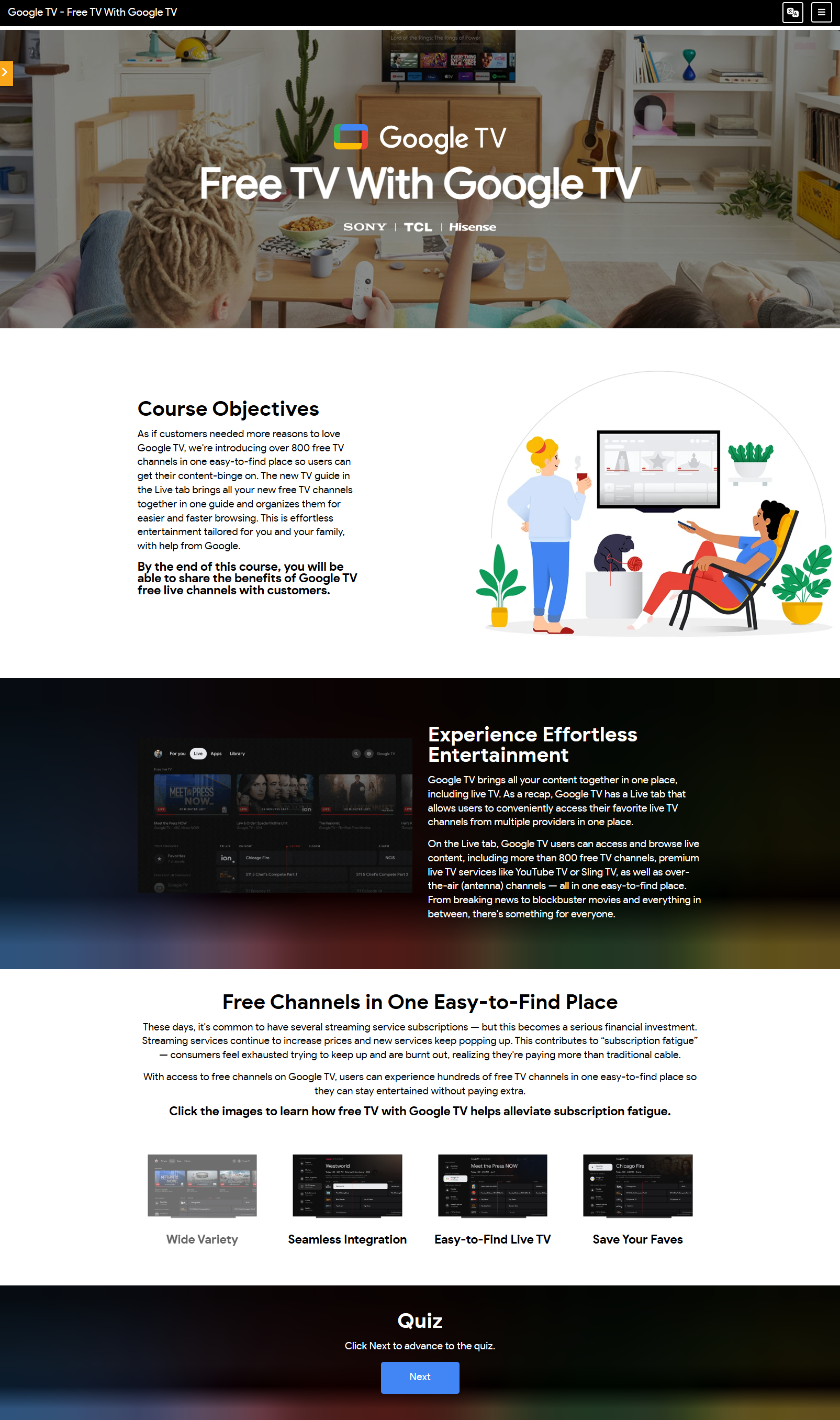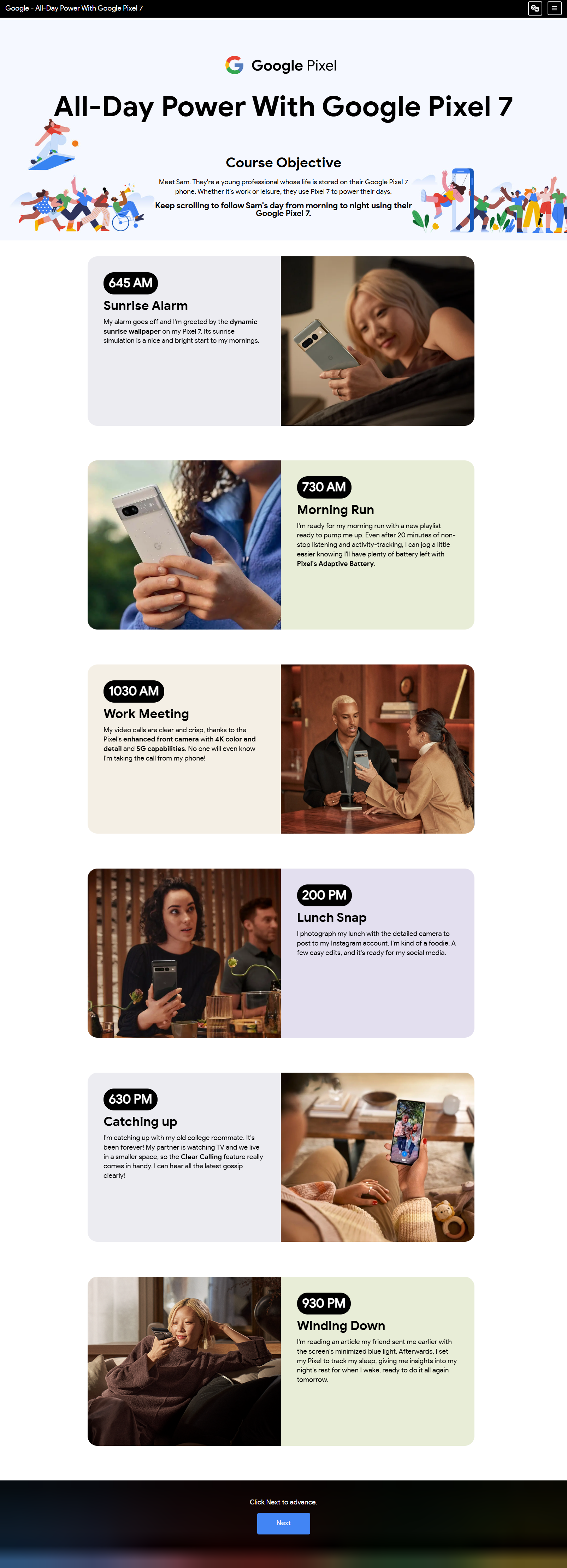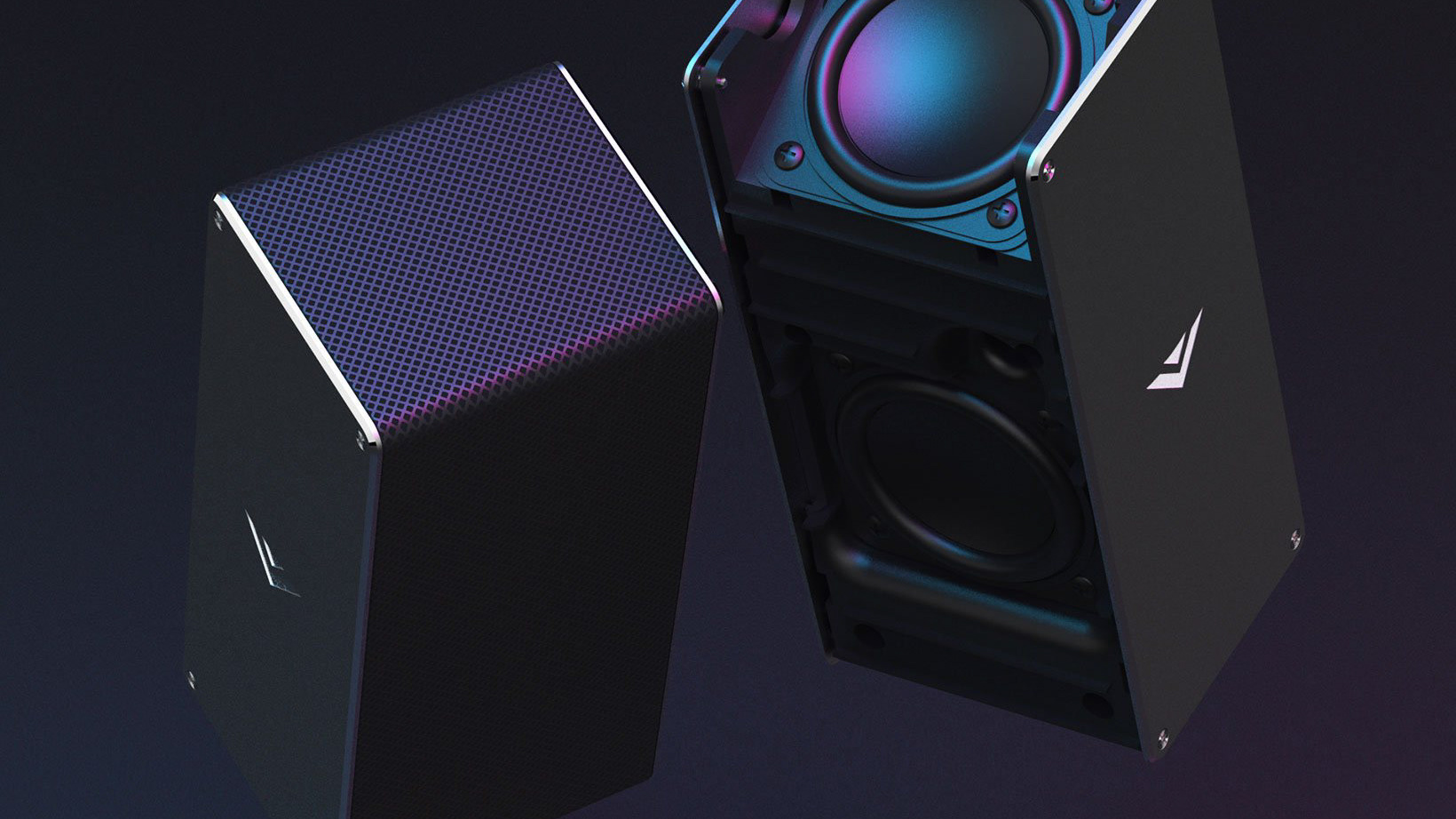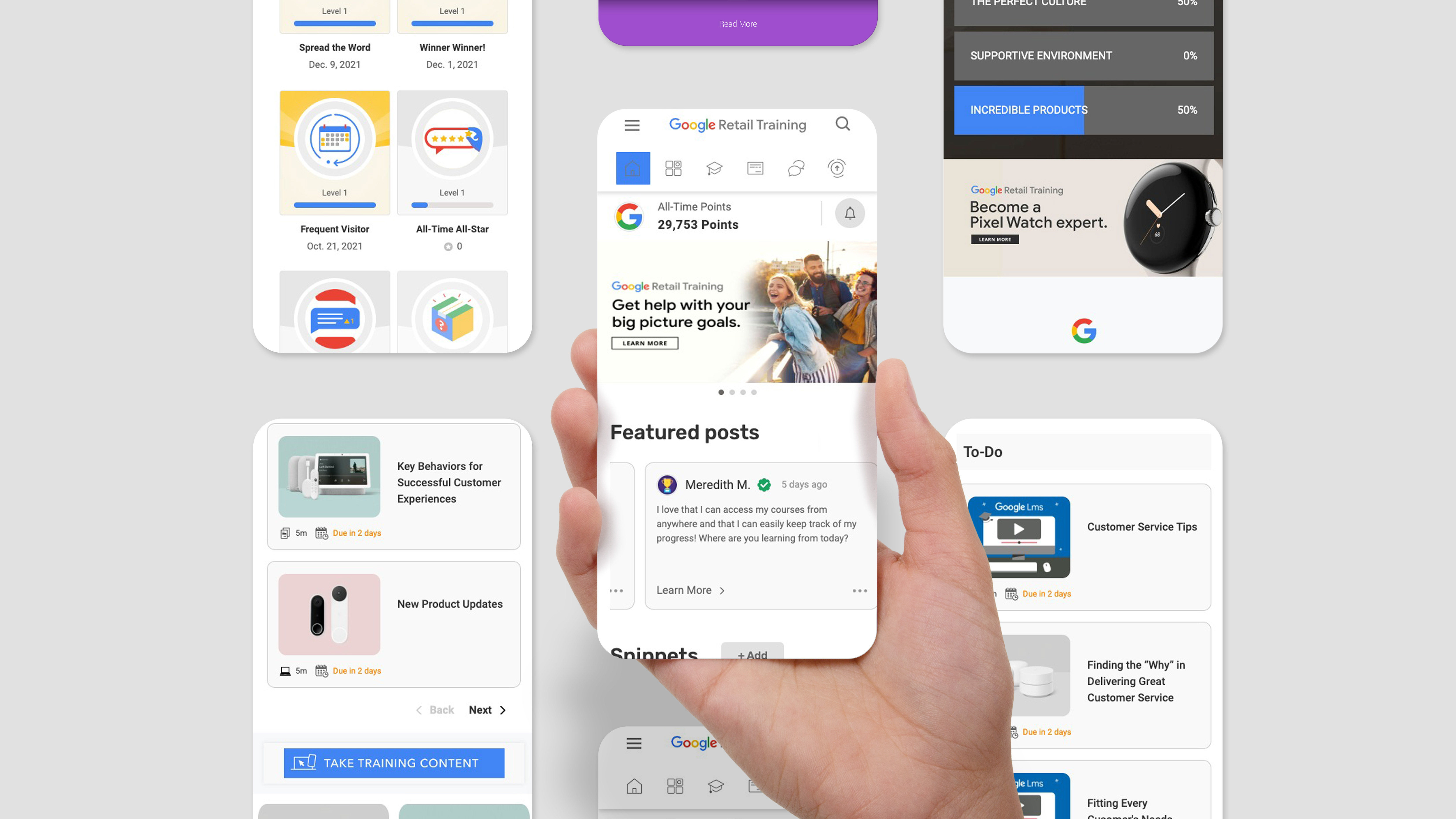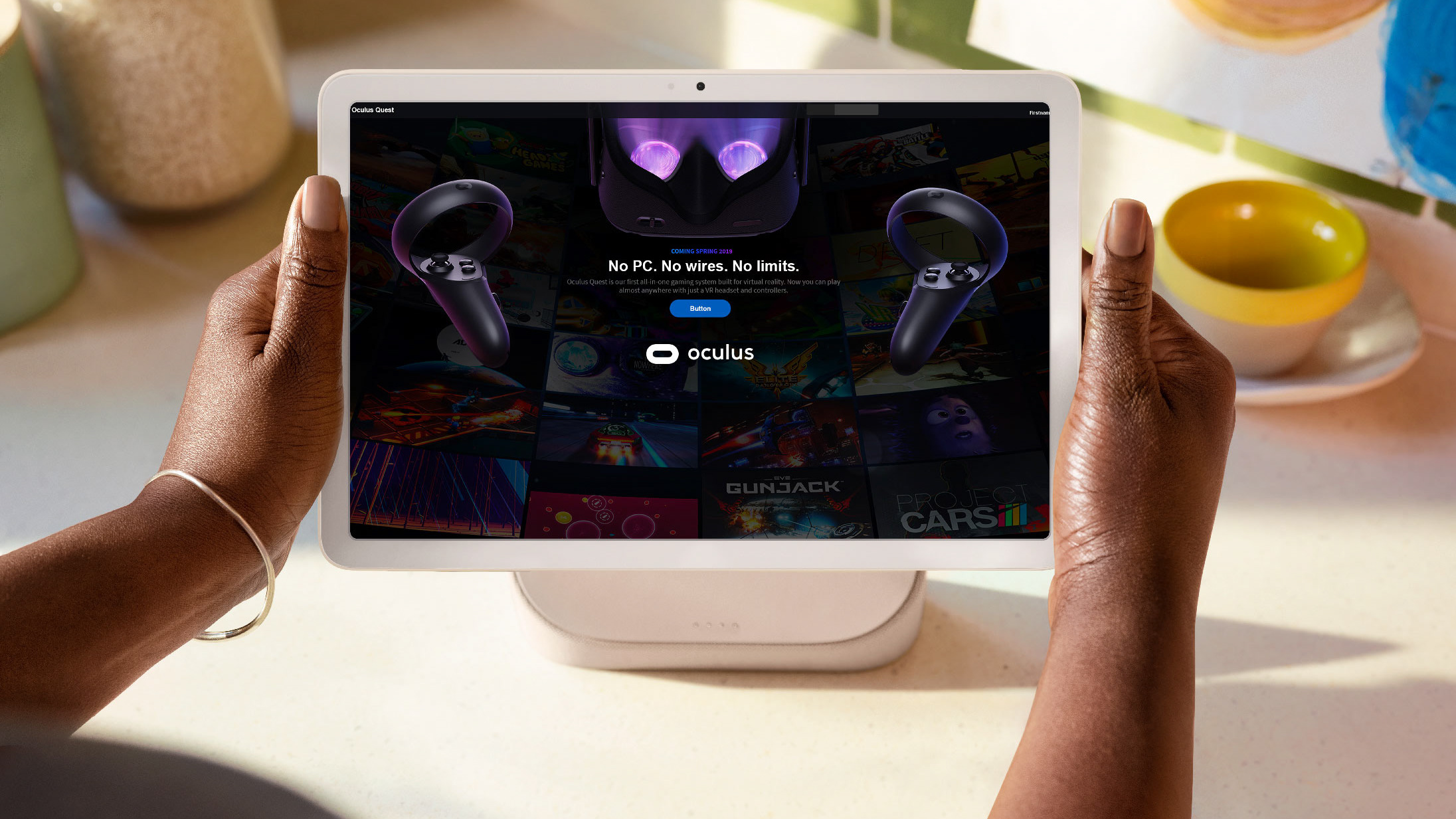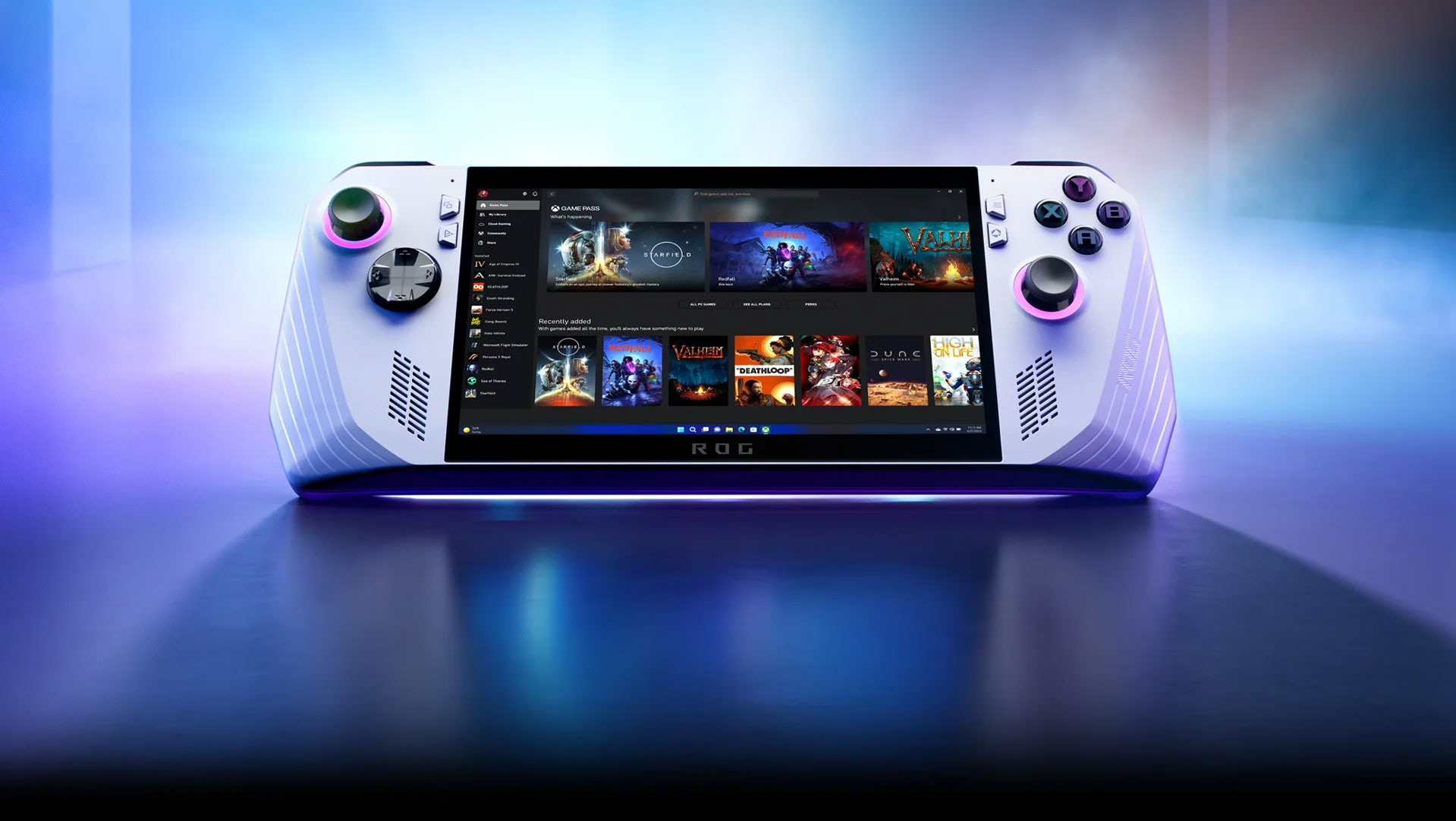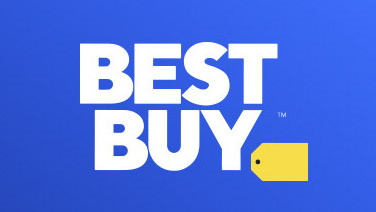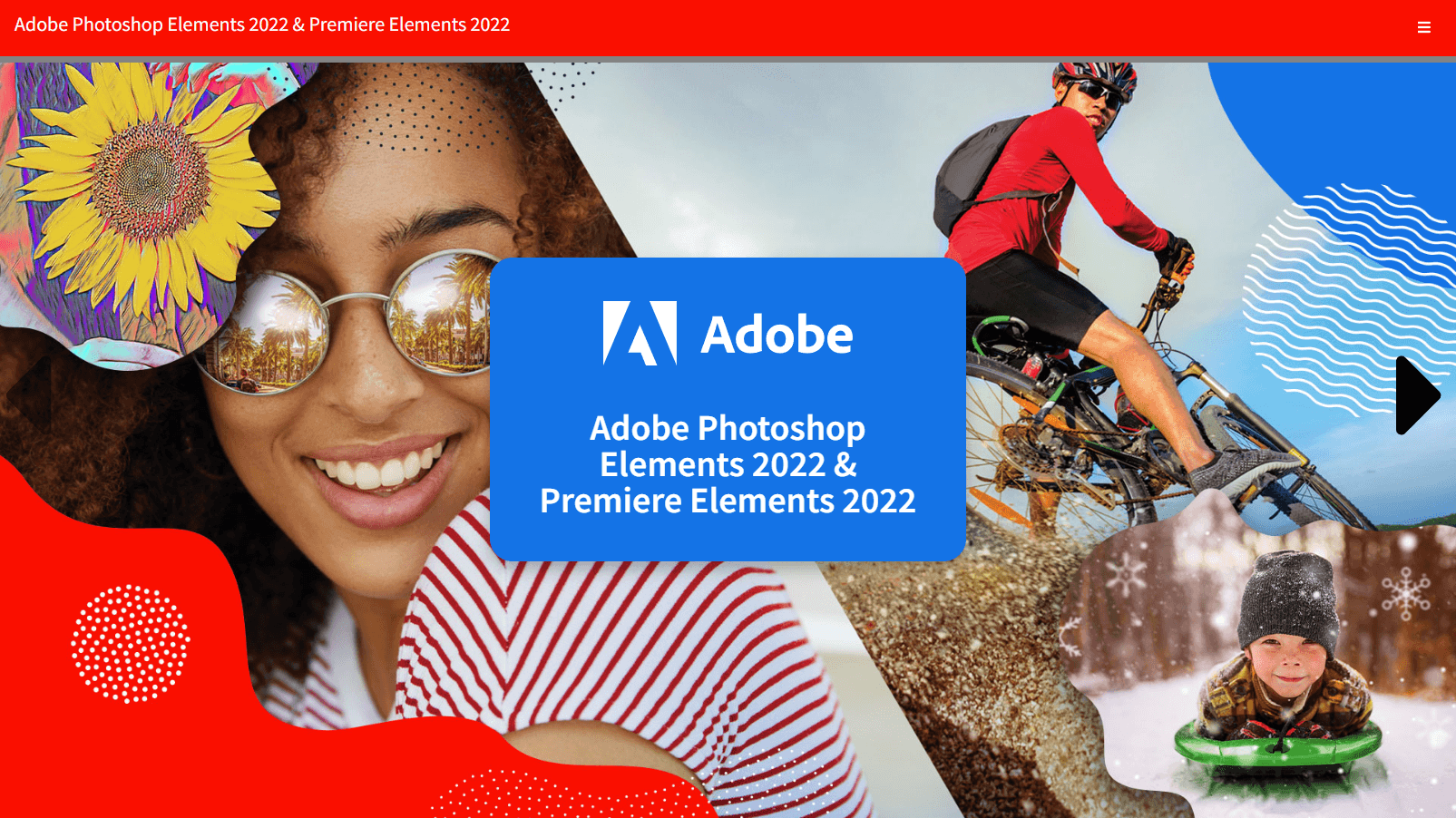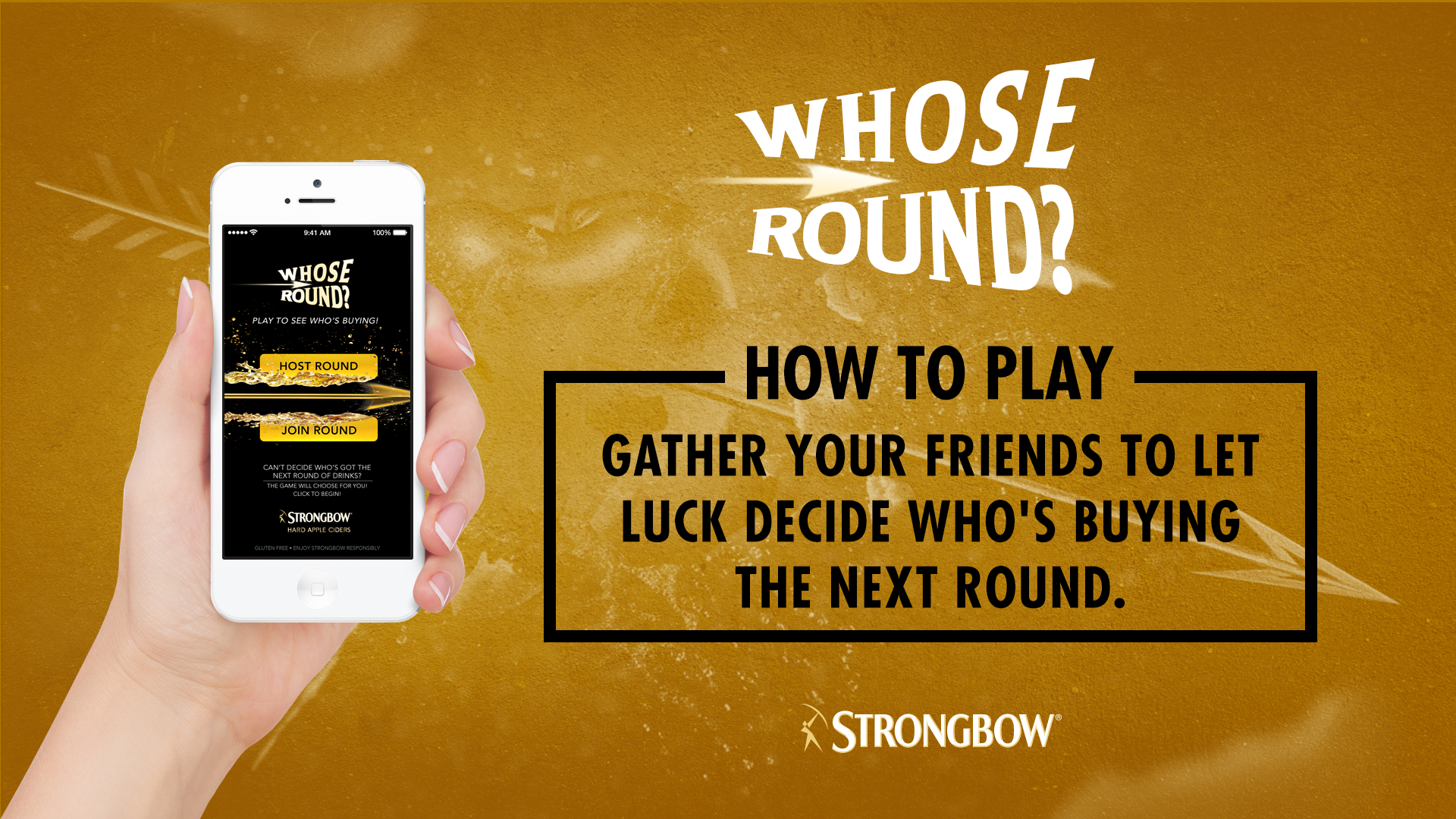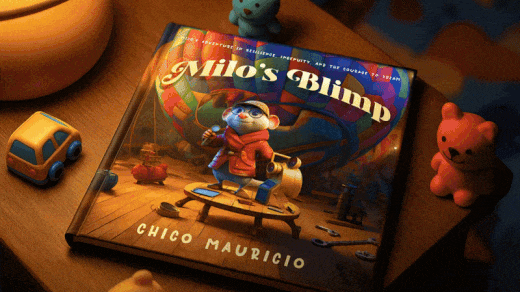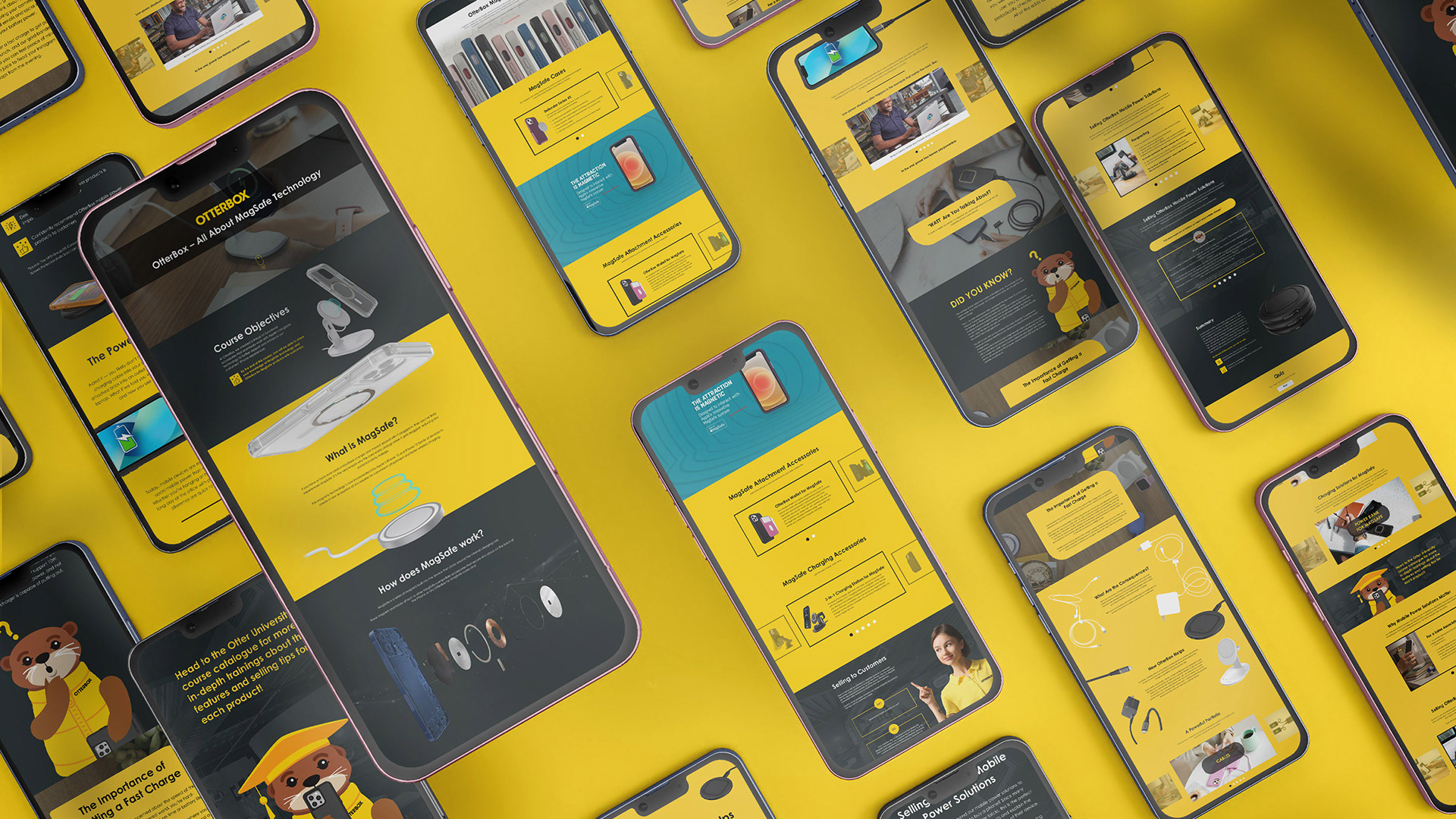Audience
Retail sales associates and service reps who need to confidently recommend Google TV devices and features to customers.
Responsibilities
Applied instructional design models such as ADDIE and Bloom’s Taxonomy to structure learning that moves from foundational understanding through analysis to recommendation skills.
Designed the visual look and feel of the course to align with Google’s branding (clean UI, accent colors, typography) while ensuring clarity of product visuals and feature comparisons.
Developed and implemented the full course end-to-end: storyboarding, scripting, multimedia asset creation (screenshots, UI walkthroughs, videos or interactive mockups), layout, and course deployment.
Created realistic customer personas and scenario-based learning paths: e.g., a renter without existing smart home devices, a tech-savvy user wanting all integrations, someone who values simplicity and cost-effectiveness.
Authoring branching dialogues and decision trees where learners make discovery questions, choose which TV features to highlight, and deal with customer objections.
Designed assessments and feedback: knowledge checks, scenario debriefs, comparison charts, reflection tasks.
Collaborated with SMEs (product engineers, Google brand/product marketing) to ensure accuracy of specifications and messaging.
Tools Used
Learning/authoring platform (e.g. Halight Monsoon or equivalent) for interactive content, branching logic, deployment.
Visual tools (Adobe Creative Suite or similar) for screenshot capture, image editing, graphic assets.
Storyboarding / flow-mapping tools (PowerPoint, Figma) to map the learning path and scenarios.
Product spec sheets, competitor analysis documents (to help position Google TV vs others).
Feedback/collaboration tools (review cycles with SMEs, peer reviews).
Problem
Sales staff often know general information about smart TVs but struggle to differentiate Google TV’s unique value (software experience, content integrations, voice control, casting, updates, etc.) in a way that matches each customer’s priorities.
Customers’ needs are diverse: streaming quality, app availability, integration with other smart devices, budget, UI preferences. Without targeted training, sales reps may either oversell features irrelevant to the customer or under-sell key differentiators.
Lack of scenario-based practice means reps may be unprepared for common objections (“I already have a streaming stick”, “Is it easy to use?”, “How is it different than Roku/Fire TV/Apple TV?” etc.).
Solution
Designed a scaffolded learning path: start with overview of Google TV ecosystem, core features, apps, UI flow → then scenario work where learners interact in branching decision trees.
Incorporated constructivist learning: learners build knowledge by choosing their path, seeing outcomes of choices, and reflecting.
Used Gagné’s Nine Events of Instruction: e.g., gain attention with an opening video comparing Google TV with competitors; state learning objectives; stimulate recall of what learners already know about smart TVs; present new content (feature deep dives); provide guidance via examples; elicit performance via scenarios; provide feedback; assess via knowledge checks; enhance retention with summary job aids/comparison tables.
Designed visuals to emphasize feature comparisons ( side-by-side charts ), UI walkthroughs (what the user sees), videos showing voice commands, casting, app switching etc.
In scenario branches, included customer objections and how to address them. After each branch, debrief feedback: what went well, what could change.
Provided downloadable or embedded job aids (comparison sheets, sales pitch templates) so sales associates could use them during customer interactions.
